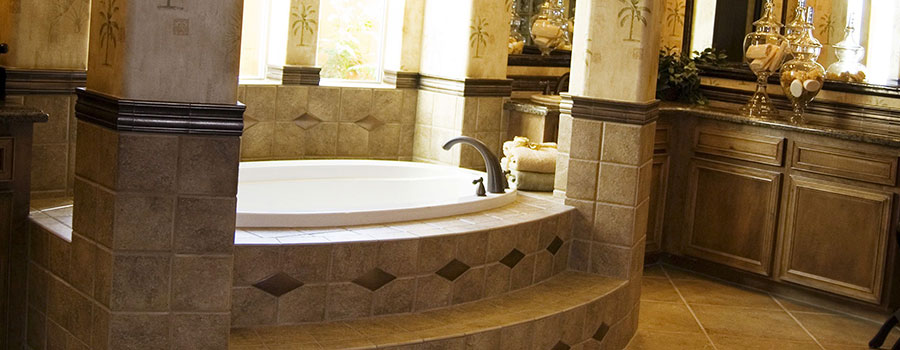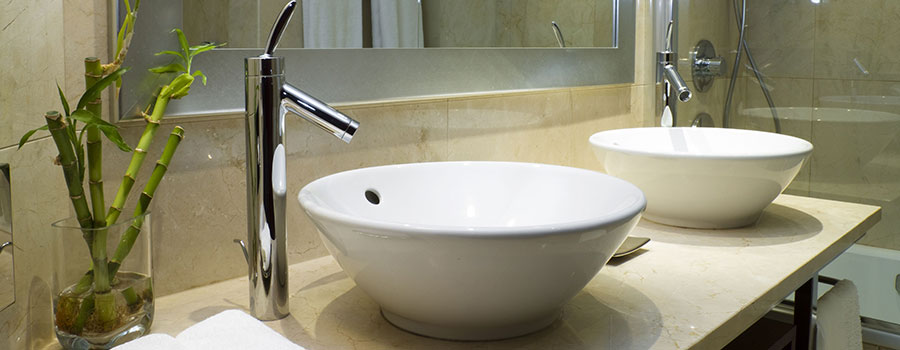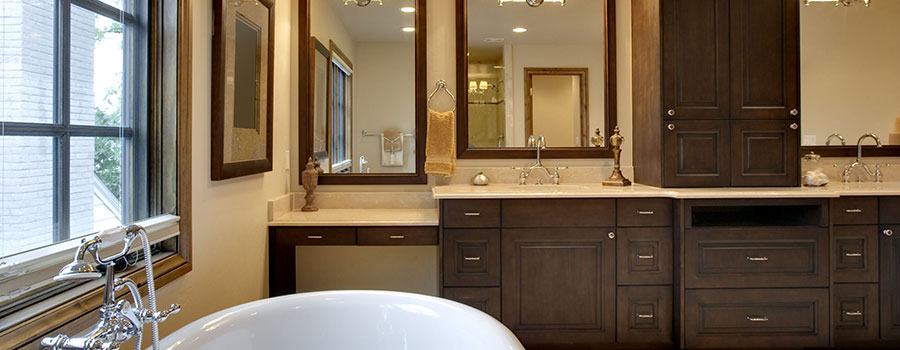Bathroom Addition: Should You Choose Ceramic or Porcelain Tiles?
When it comes to bathrooms, a lot of people would think of getting tiles for the bathroom flooring. Regardless of a planned home addition design or a bathroom renovation, having a nice bathroom should be planned accordingly. There are a lot of things to consider when building or renovating a bathroom – from the countertop material to the shape of the bathtub that will suit the bathroom. You might even want to consider whether to put indoor plants in your bathroom area. But for now, we have to think about which type of flooring to put in the bathroom. All about bathroom flooring Two of the most popular bathroom flooring are ceramic and porcelain tiles. They may seem like the same thing. A lot of people wouldn’t even think about a specific floor tile as long as it looks nice and is specifically meant for bathrooms. It is understandable, though. Not everyone knows the difference between ceramic and porcelain tiles. They are both used usually for bathrooms and the same installation process. Perhaps one type of tile is a little expensive than the other. But just how do they differ from each other? For one thing, ceramic and porcelain belong to the same type of tiles called ceramics. This type of tile is made from organic earthen clays and then hardened using heat. But lately, porcelain tiles had their own flooring category as it is said to have different specs from other bathroom tiles. Nonetheless, you should consider the type of bathroom material to use when planning on building a home addition. One factor to consider aside from color and design is its water absorption level. What’s with ceramic tiles? Ceramic tiles are usually made from coarse clay mixed with a small amount of fine kaolin clay. Likewise, it does not have the same additives as those in porcelain clay. Ceramic tiles also tend to be a little porous than porcelain tiles, though it may not be a big deal especially if the former is treated with glaze. Ceramic tiles are also less expensive than porcelain tiles (starts at $.50 per square foot) and used indoors only. Ceramic tiles usually come in monochromatic colors. You can ask professional home remodeling architects whether ceramic tiles will suit your budget and bathroom design. As mentioned, ceramic tiles are more porous than porcelain bathroom tiles. On the upside, ceramic tiles can resist heat better than porcelain, which is why the former can be a good countertop material. As for care and maintenance, ceramic tiles are not that difficult to clean. As bathroom tile material, it needs regular mopping and period sealing. Glazed ceramic tiles also have less tendency to absorb water. But if you have unglazed tiles, you might have to apply sealers on the whole tiles. What’s with porcelain tiles? Meanwhile, porcelain tiles have a lower water absorption rate. Like ceramic tiles, porcelain tiles also use kaolin clay but with a mix of feldspar and quartz. Unlike ceramic tiles, porcelain can mimic different materials like marble and wood grains. That is why porcelain tiles are a good choice if you want that […]
Read moreHow To Choose The Right Sink For Your Bathroom
The bathroom is one of the places in the house you consider to be your personal space. Next, to your room, this is where you find refuge and relaxation. One of the home remodeling addition is a bathroom that presents a personality that reflects you and what you really wanted. However, as visually pleasing as you wanted your bathroom to be; your sink should not fall second best. CHOOSING YOUR VERY OWN BATHROOM SINK Just like modern technology, bathroom sinks nowadays have a wide range of options where consumers like you will surely be overwhelmed with its vast, broad spectrum of styles, types, and colors. But if you make yourself open to all the available options the decision-making process can be easier and less confusing. Plus, being specific with what you really wanted can assure you that your bathroom sink will be the perfect match with the rest of your bathroom items. THE DIFFERENT TYPES OF BATHROOM SINKS Self Rimming The Self Rimming Sinks are also known as the Drop In Sinks which are being installed above the bathroom counters. Sinks such as these have a rolled and finished rim that secures the sink above the countertop keeping it all in place. Actually, the self-rimming is the easiest sink to install because it can also be replaced anytime without the need of altering your entire countertop. It also blends well with all kinds of bathroom materials, making it a sink of all styles. Undermount The Undermount sinks are being installed on a solid surface countertop like granite, concrete, and marble from underneath. This kind of sink can be customized where the sink is exactly the same size as the hole cut into the counter. However, replacement of this sink can be a bit challenging since it’s customized. Pedestal The Pedestal sink is a freestanding unit that is supported by a small columnar set that is fixated beneath the sink itself. A sink like this is not to be installed in your vanity area. The pedestal sink type is the top choice for a small bathroom as it gives more room in the area and does not need any space for storage. Vessel The vessel sink is what you need for your vanity countertop where the bottom part of the sink is aligned with the entire countertop. This kind of installation is called the above-counter. At one point, this sink type can partially sit on the counter, although a large space above the countertop which can be your advantage if you have a lot of personal bathroom stuff. You can choose from glass, stone, ceramic, and a lot more materials of this type of sink. Console The console sink is a wall-mounted sink that is supported by 2 to 4 legs. However, the plumbing drain and water supply line is exposed so try matching your faucet with it for a more unified look. Wall Hung The wall hung sink is also a wall-mounted type that is designed to save bathroom space if you have a smaller room. They are not matched or bundled with any vanity or counter. This type of […]
Read moreTips To Illuminate Your Bathroom
Choosing the right lighting system for your home can really be overwhelming, but the home remodeling addition experts can guarantee you that with the right guidelines and tips you can eventually light up your home with the appropriate fixtures you wanted and dreamed of. But, when it comes to your vanity area – the bathroom – next to your bedroom, you sometimes prefer something more special or personal. Your bath area includes the shower area and the tub area and all of them have a specific lighting requirement that will not only give more radiance to your bathroom but style as well. THE BATHROOM FIXTURE GUIDELINES Try Using The Side-Mounted Sconces. Side-mounted sconces are the best lighting choice for any bathroom area. Either you use one on your left or right side, or mounted both on an eye-level, both ideas are cool, you just have to consider some few things: The backplate of upright, tube-shaped lighting should be mounted on an eye-level. The glass down-lights opening shade must be slightly fixated below eye-level. The glass up-lights opening shade must be slightly installed above eye-level. If you choose to have it centered above your sink area, install the light a few inches to the left and right side part of your bathroom mirror. The closer it is to your face, the better. Consider The Layers of Light. If you wanted to showcase your bathroom area, the layers of light can do you wonders. To have an evenly distributed illumination, try the combination of ambient lights like flush mounts, pendants, or chandeliers, then task lighting as your second light layer which is perfect for your grooming sessions such as shaving and makeup application, then lastly, the accent lighting which is a great choice for highlighting the architectural design of your bathroom as well as the decors. Pendant Fixtures Are A Great Alternative. If you wanted to try other options for a candlestick-type fixture, the pendant lighting should be your choice. They will look perfect in your vanity area and can also work as an accent or ambient lighting at the same time or whenever it’s necessary. Stay With Kin Finishings. If sconces are what you have installed in your bathroom keep them affixed where they are because you shouldn’t always adjust it with your other fixtures. They will maintain the wholeness of your bathroom space as well as the total design of it. The Tub Area. The sconce fixture can enhance the ambiance of any room, especially your tub area. Although overhead lighting is also good in any bathroom area, it cannot easily provide a relaxing atmosphere that the sconce lighting can give. Use A Versatile Element. If you are after versatility and wholeness the brass or chrome elements can display versatility within your bathroom area and all the accessories that go along with it. Like Always – Size Matters. Regardless of the size and design of your bathroom space, a chandelier or a pendant fixture can make your room opulent. The appropriate lighting will stand out and will always set the tone of any bathroom’s interior and style. SOME BATHROOM LIGHTING […]
Read more


